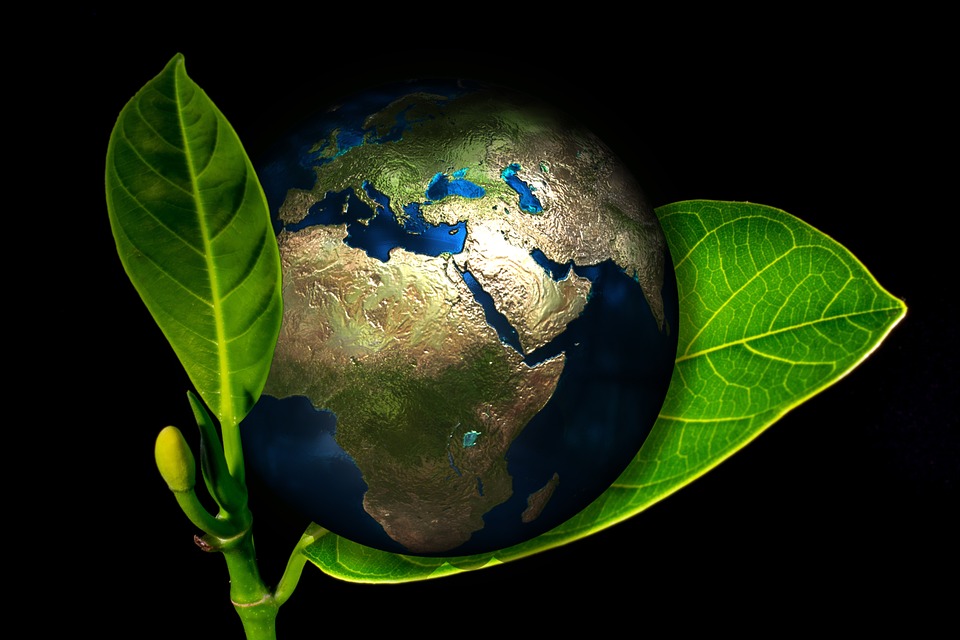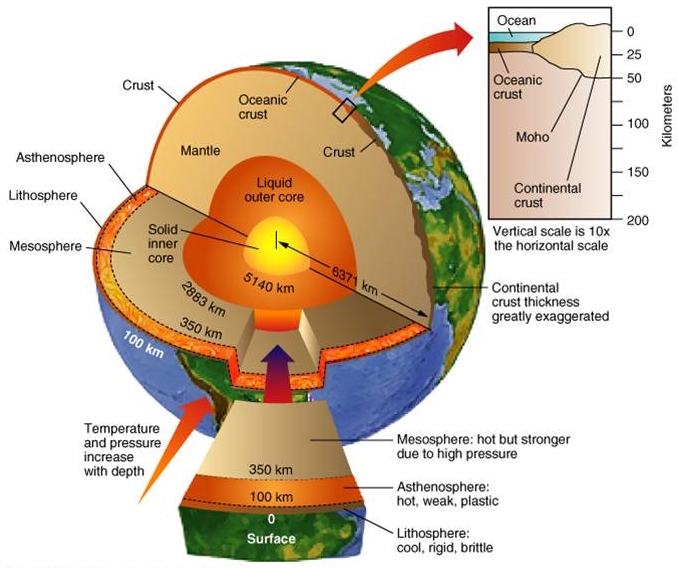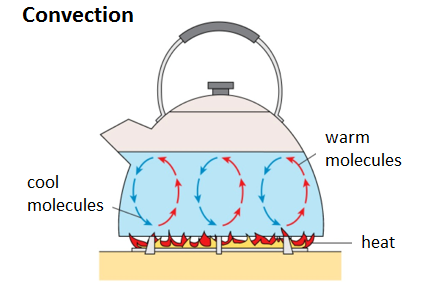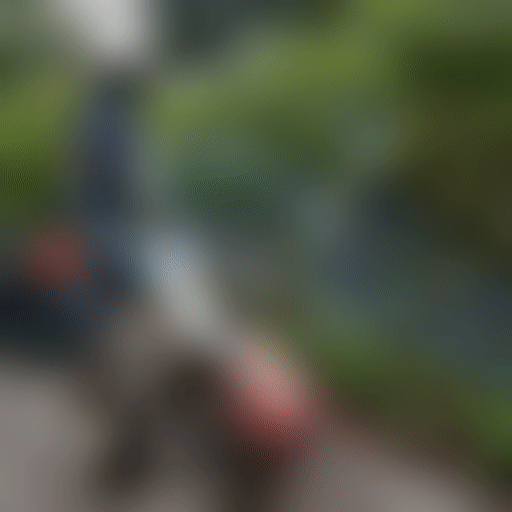In this post I will present the science of geology, and the science of Earth's Interior, how the formation of the earth that became the place of human activity. Earth is the place, and the earth is the third planet of the eight planets in the Solar System. It is estimated that he is 4.6 billion years old. the distance between Earth and sun is 149.6 Km.
 pixabay
pixabay
did do you know about Earth's Interior... ???
The interior structure of the Earth is layered in spherical shells: an outer silicate solid crust, a highly viscous asthenosphere and mantle, a liquid outer core that is much less viscous than the mantle, and a solid inner core. Scientific understanding of the internal structure of the Earth is based on observations of topography and bathymetry, observations of rock in outcrop, samples brought to the surface from greater depths by volcanoes or volcanic activity, analysis of the seismic waves that pass through the Earth, measurements of the gravitational and magnetic fields of the Earth, and experiments with crystalline solids at pressures and temperatures characteristic of the Earth's deep interior.
source
 source
source
In general, the earth consists of land " continents, islands, valleys, mountains, troughs, and underwater mountains ". The highest mountain top is 8.850 m above sea level (Mount Everest, The Himalayas), while the deepest trough reached a depth of 11,033 m below sea level (trough of mariana).
mount Everest and trough of mariana
Anatomy of the Earth
Core
Located start of depth 2.883 km to the center of the earth. Its density ranges from 9.5 g/cc near the mantle and enlarges to the center at 14.5 g/cc. Based on the magnitude of this density, the earth's core is thought to have a mixture of elements that have large densities, namely Nickel (Ni) and Iron (Fe). Therefore, the earth's core is also often referred to as layers Nife.
inner core
Kedalaman 5.140-6.371 km. Berfasa padat, berat, dan sangat panas.
outer core
Depth 2,883-5,140 km. Liquid and very hot.
Mantle
Is a layer that envelops the core of the earth. It is the largest part of the earth, 82.3% of the earth's volume and 67.8% of the Earth's mass. Its thickness is 2,883 km. Its density ranges from 5.7 g / cc near the core and 3.3 g / cc near the earth's crust.
Crust
It is a thin outer layer, composed of lighter rocks compared to the rock of the mantle underneath. The average density is 2.7 g / cc. The thickness is uneven, this difference in thickness leads to an elevation difference between the continents and the oceans. In mountainous areas the thickness is> 50 km and in some oceans <5 km. based on seismic data and their material composition, the experts divide into continental crust and oceanic crust.
Continental crust
consisting of granitic rocks, an average thickness of 45 km, ranging from 30-50 km. Rich in Si and Al elements, they are also called layers SiAl.
Oceanic crust
consists of basalt rocks, about 7 km thick. Rich in Si and Mg elements, they are also called layers SiMa.
Earth based on rheological studies
Mesosphere
The solid layer in a coat of relatively high strength is called the mesosphere (intermediate layer, intermediate or middle sphere). This layer lies between the boundary of the core and the mantle (2,883 km depth) to a depth of about 350 km.
Asthenosphere
The upper layer of the mantle, at a depth between 350 km - 100 km below the earth's surface, is a layer called the asthenosphere (weak layer, weak sphere). The balance of temperature and pressure here is such that the material is in close proximity to its melting point.
Geologists claim that the rocks in mesosphere and asthenosphere have the same composition. The only difference is only in its physical properties, strength.
Lithosphere
Located above the asthenosphere, the 100 km thick layer of the earth's surface is a layer of rock that is colder, stronger, and more rigid than a plastic asthenosphere. This hard outer layer includes the upper mantle and the whole crust. The composition of the crust and the mantle are different, but the difference between lithosphere and asthenospheres is rock strength, not its composition.
 source
source
The earth's crust, which is the topmost part of the earth's interior, is directly in contact with oxygen and is the site for the accumulation of rock minerals to be the main target of the genesis of precipitated mineral deposits in order to know the distribution of valuable minerals. The availability of these precious minerals depends greatly on the amount (concentration) of their minerals, and the location and form of the sediment.
The earth's crust is a relatively cold, brittle, and rigid solid (rigid) with a lower density that seems to float above the mantle. This is the part that is on the surface of the earth to a depth of ± 100 km. Due to the very high heat difference between the central part of the earth and the outer part of the earth, there will be a pressure difference where the pressure on the inside is larger, so that the magma movement will produce a convection flow inside the mantle. The hotter melt of magma will move upward and the cooler magma melt will sink (such as the movement of convection water flow when we heat water on the stove).
 source
source
As a result of the convection flow of the magma melt, the solid and relatively fragile layer of the earth that is above it (floats) moves along with the magma melt movement. In a certain place, the crust layer will crack and move away from each other, and the fractures left behind will soon be filled with magma melts which then also freeze (referred to as the strain areas where the closely spaced crust plates away), for example the Mid Oceanic Ridges are at the bottom of the Atlantic oceans, and the rifting that occurs between the African continent and the Arabian Peninsula that forms the Red Sea.
In other parts of the earth there will be collisions between the approaching plates. The relatively thin plate (oceanic plate) will dip down the relatively slender continental plate, this zone is referred to as the subduction zone. An example is a subduction zone extending from Sumatra, Java, to East Nusa Tenggara. At the portion will melt into magma and part of the other plate will experience folding, lifting, and enlargement.
With the cracks / openings caused by the formation of the faults, then in certain parts of the zone is sometimes penetrated by hot magma melt from the mantle and form pockets of magma, which is referred to as magma chamber.
If the breakthrough continues until it reaches the surface of the earth, then there is the formation of a series of volcanoes. The outgoing magma will result in volcanic eruptions of tuff, lava, or lava flows that will form lava rocks on the surface. Magma that do not reach the surface will freeze inside the earth to form various types of igneous rocks.
Supporting literature / Reference
All about my article part1, part2, part3, part4,part5, part6, part7, part8, part9, part10, part11
science never die





You received a 80.0% upvote since you are a member of geopolis and wrote in the category of "geopolis".
To read more about us and what we do, click here.
https://steemit.com/geopolis/@geopolis/geopolis-the-community-for-global-sciences-update-4
bereh aduen.
bek tuwe follback nyo akun baru
STOP! Freeze Frame!
What do u mind, I don't understand
Good post
Tahnkyu brader
Congratulations! This post has been upvoted from the communal account, @minnowsupport, by rabo from the Minnow Support Project. It's a witness project run by aggroed, ausbitbank, teamsteem, theprophet0, someguy123, neoxian, followbtcnews, and netuoso. The goal is to help Steemit grow by supporting Minnows. Please find us at the Peace, Abundance, and Liberty Network (PALnet) Discord Channel. It's a completely public and open space to all members of the Steemit community who voluntarily choose to be there.
If you would like to delegate to the Minnow Support Project you can do so by clicking on the following links: 50SP, 100SP, 250SP, 500SP, 1000SP, 5000SP.
Be sure to leave at least 50SP undelegated on your account.
It's better to hang out with people better than you. Pick out associates whose behavior is better than yours and you'll drift in that direction.
Tentu saja bro
Brotuss keren post rakan drokuh @rabo.. wah tamugure sang kali nyoe..
Beuk bertoh bg,, meukarat wate d approved lage droneh neuh 😀😀😀